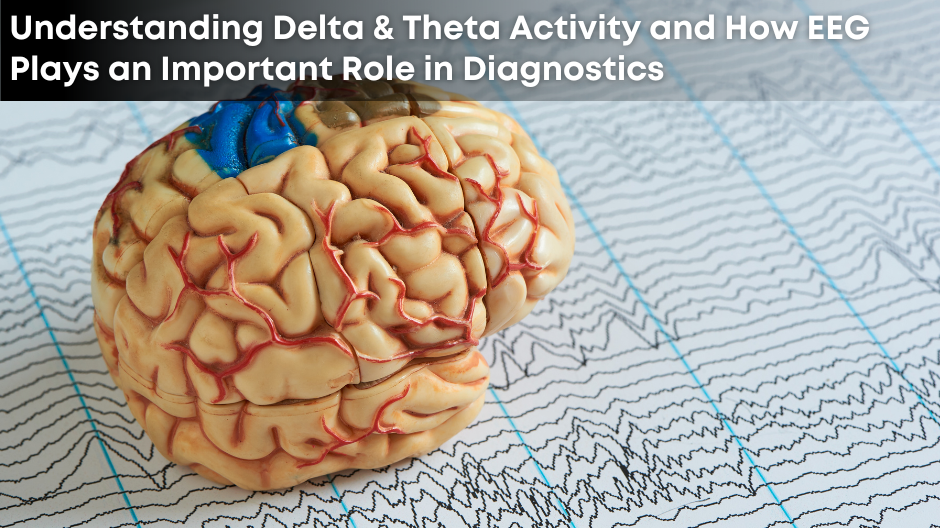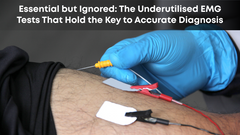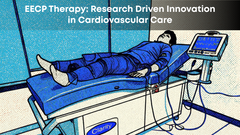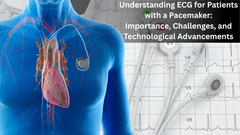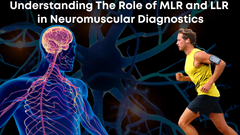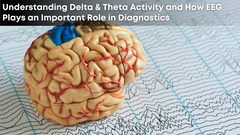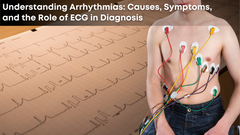Understanding Delta & Theta Activity and How EEG Plays an Important Role in Diagnostics
The human brain operates through electrical signals, categorized into different frequency bands that correspond to various cognitive and physiological states. Among these, delta (0.5–4 Hz) and theta (4–8 Hz) waves play critical roles in brain function, particularly in the frontal lobes, which are responsible for executive functions, decision-making, and emotional regulation.
Abnormal activity in these frequencies is linked to various neurological and psychiatric conditions, including schizophrenia, depression, traumatic brain injury (TBI), ADHD, and neurodegenerative diseases. Electroencephalography (EEG) is a key diagnostic tool in assessing delta and theta activity, providing valuable insights into brain function and potential disorders.
The Discovery of Delta & Theta Waves
The identification of brainwave activity dates back to Hans Berger, who first recorded the human EEG in 1924. Delta waves were recognized as the dominant frequency during deep sleep by W. Grey Walter in the 1930s, while theta waves were later associated with drowsiness and memory processing. Further research in the mid-20th century linked these waves to neurological and psychiatric conditions, paving the way for modern EEG diagnostics.
Understanding Delta Waves in the Frontal Lobes
Delta waves are the slowest brainwaves, typically dominant during deep sleep and states of unconsciousness. In a healthy brain, delta activity is minimal when awake, particularly in the frontal lobes. However, abnormal increases in delta waves in this region may indicate neurological dysfunction.
When Is Elevated Delta Activity a Concern?
· Traumatic Brain Injury (TBI) – Excessive frontal delta waves can indicate diffuse brain damage, seen in concussions and severe head injuries.
· Neurodegenerative Disorders – Conditions like Alzheimer’s, Parkinson’s, and dementia often show heightened delta activity due to progressive neuronal degradation.
· Schizophrenia – Research has linked increased delta activity to cognitive impairments in schizophrenia patients, affecting memory, attention, and executive function.
· Coma & Altered Consciousness States – Elevated delta waves are a hallmark of reduced brain function in comatose or minimally conscious states.
Understanding Theta Waves in the Frontal Lobes
Theta waves are associated with daydreaming, creativity, relaxation, and early sleep stages. While theta activity is natural during rest and meditation, abnormal levels in the frontal lobes can indicate cognitive dysfunction.
When Is Elevated Theta Activity a Concern?
· Attention Deficit Hyperactivity Disorder (ADHD) – Excessive frontal theta activity is a known biomarker of ADHD, affecting concentration and impulse control.
· Depression & Mood Disorders – Individuals with major depressive disorder (MDD) and bipolar disorder often show irregular frontal theta wave patterns, affecting emotional regulation.
· Trauma & PTSD – Studies indicate that increased frontal theta is common in individuals who have experienced severe trauma or PTSD, contributing to hypervigilance and emotional dysregulation.
· Cognitive Decline – Elevated theta waves are linked to mild cognitive impairment (MCI), a precursor to dementia and Alzheimer’s disease.
How EEG Helps in Diagnosing Abnormal Delta & Theta Activity
Electroencephalography (EEG) is a non-invasive method for measuring brainwave activity, providing real-time insights into neural function. EEG’s ability to detect delta and theta abnormalities allows clinicians to identify underlying neurological and psychiatric conditions with high accuracy.
Benefits of EEG in Diagnosis:
· Real-time Monitoring – EEG can track brainwave fluctuations during different cognitive tasks, sleep, and wakefulness.
· Early Detection – Subtle changes in delta and theta activity can indicate early stages of neurodegenerative diseases before clinical symptoms appear.
· Objective Biomarker – Unlike subjective assessments, EEG provides quantifiable data on brain function.
· Non-Invasive & Cost-Effective – EEG is painless, widely available, and more affordable than MRI or PET scans.
Delta & Theta Abnormalities: Condition-Specific EEG Patterns
|
Condition |
Delta Wave Abnormalities |
Theta Wave Abnormalities |
|
ADHD |
Normal |
Excessive frontal theta activity, linked to poor focus. |
|
Schizophrenia |
Increased delta in the frontal cortex, affecting cognition. |
Irregular theta bursts, linked to hallucinations. |
|
Depression |
Slightly increased delta in severe cases. |
Increased theta in frontal lobes, affecting mood regulation. |
|
TBI |
Increased delta in damaged areas. |
Higher theta in injured regions, affecting memory. |
|
Alzheimer’s |
High delta due to neurodegeneration. |
Elevated theta, linked to cognitive decline. |

Monitoring Delta & Theta Activity for Preventive Healthcare
Regular EEG monitoring can help identify early neurological changes before symptoms become severe. This allows for:
✔ Early intervention in conditions like Alzheimer’s and ADHD.
✔ Predicting risk factors for mental health disorders.
✔ Optimizing treatment plans through EEG-guided therapies.
✔ Tracking brain recovery after trauma or injury.
Modern Advances in EEG for Delta & Theta Analysis
1. AI-Powered EEG Interpretation
Recent advancements in artificial intelligence (AI) and machine learning are improving EEG diagnostics. AI-driven EEG analysis can:
✔ Detect subtle delta/theta abnormalities that a human might overlook.
✔ Predict disease progression, especially in neurodegenerative conditions.
✔ Personalized treatment by identifying optimal interventions based on EEG patterns.
2. Portable EEG & Remote Monitoring
Companies like Clarity Medical are developing high-resolution portable EEG systems that enable:
✔ At-home brain monitoring for epilepsy, TBI, and mental health disorders.
✔ Noise-filtering technology to ensure accurate readings, even in non-clinical settings.
✔ Integration with telemedicine, allowing remote EEG analysis and real-time feedback.
Conclusion
Understanding delta and theta activity in the frontal lobes is crucial for diagnosing neurological and psychiatric disorders. EEG technology remains the most effective tool in assessing these brainwaves, allowing clinicians to detect abnormalities early and provide targeted treatments. With the advent of AI-powered analysis and portable EEG solutions, diagnostic accuracy is reaching new heights, making brainwave monitoring more accessible and precise.
As neuroscience advances, Clarity Medical continues to develop cutting-edge EEG solutions, ensuring clinicians have the best tools for brain function assessment. By leveraging these innovations, we move closer to a future where early diagnosis and personalized neurological care become the norm.


